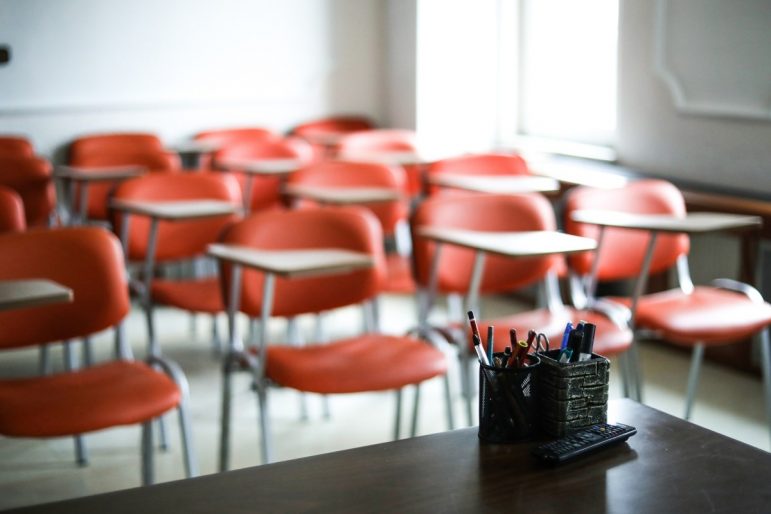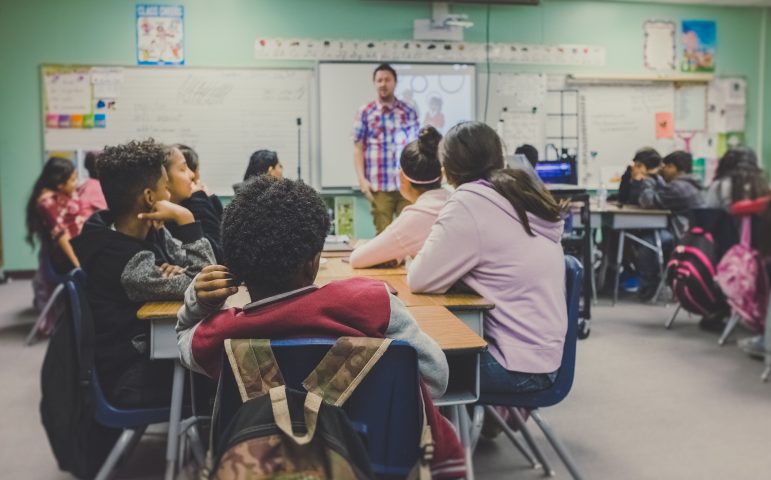California is one of the slowest states to invite students back for fully in-person instruction amid the pandemic, data released Wednesday by the U.S. Department of Education shows.
State and local education officials have been pushing for a swift and safe reopening of schools across California through a combination of financial incentives, vaccine priorities and access to safety supplies. But the new data shows that much of the state remains in distance learning, even as the majority of the country’s schools have started welcoming students back to campus in some capacity.
California is among states with the highest percentage of schools that are not yet offering fully in-person instruction, according to the department of education data, which was collected Feb. 22 through March 12 of this year. About 82% of elementary schools are not open for fully in-person instruction in California, topped only by Washington (91%), Oregon (92%) and Maryland (92%).
While California trails other states in offering fully in-person instruction to all students, several states that are offering in-person instruction have made it only available to targeted groups of students. And a few states, including Texas and Massachusetts, lacked sufficient data for comparison.
Overall, 14% of 4th-grade students in California attend schools offering all students hybrid modes of instruction, which combine in-person instruction with online or remote learning. About 18% are offering full-time in-person instruction. At the middle school level, 19% of California 8th-graders have been offered hybrid instruction and only 3% have fully in person.https://datawrapper.dwcdn.net/gUb7Y/2/

Across the U.S., 38% of 4th-grade students attend schools with fully in-person instruction and 43% are still completely in distance learning. The remaining students are in a hybrid model. About 28% of 8th-grade students are attending schools with fully in-person instruction, while 48% are online and 20% have a hybrid program.
The data released Wednesday is the first in a series of surveys that the U.S. Department of Education plans to release focused on learning during the pandemic. This survey covered a nationally representative sample of about 7,000 elementary and middle schools.
Earlier this month, California schools were allocated $15.3 billion in federal aid under the American Rescue Plan, President Joe Biden’s Covid-19 relief and recovery law. Last spring and again in December, California schools also received federal relief funding through the CARES Act. The combined aid provides California schools with about $26.4 billion to assist in safely reopening schools and supporting students emotionally and academically.
“I need states to move quickly to get these resources to school districts, so they can get to work,” Biden said on Wednesday during the National Safe Schools Reopening Summit. “Help is here for schools to buy PPE (personal protective equipment), hire nurses and custodial staff, avoid devastating layoffs and give students extra support. Help is here to make up for lost time and lost learning.”
The summit brought together experts from the Centers for Disease Control and Prevention who discussed key strategies and recommendations, as well as recent studies and evidence, to support safe reopening. Those strategies include universal masking, keeping at least 3 feet of distance between students in a classroom and 6 feet in other settings, vaccinations, airflow in buildings and frequent testing with contact tracing.
“My son is back to school,” said CDC Director Dr. Rochelle Walensky. “I heard from his history teacher how hard it was to engage students in Zoom and do biology labs in Zoom. His experience was front and center for me as I took this role. CDC believes schools should be the last place to close and the first place to open.”https://datawrapper.dwcdn.net/FRM2L/4/

U.S. Education Secretary Miguel Cardona discussed the disproportionate impact that school closures have had on special education students, English learners and impoverished students. He said it is urgent to keep schools open for students who need it most, which he has supported since his previous role as commissioner of education for the state of Connecticut.
The survey released Wednesday also revealed stark racial disparities in who has access to in-person learning. Only 15% of Asian, 28% of Black and 33% of Hispanic 4th-graders across the county are enrolled in schools with fully in-person instruction, while nearly half of white 4th-graders were learning full time in person.
“We know there are inequities to in-person learning,” Cardona said.
At Wednesday’s event, California State Board of Education President Linda-Darling Hammond spotlighted some of the work that California school districts have been doing to bring students back in the wake of the state’s deadly spike in Covid-19 cases this winter.
In one of those districts, Cajon Valley Union School District in San Diego County, teachers and school administrators shared that in addition to acquiring proper personal protective equipment and safety plans for reopening, a critical step in reopening has been bringing members of the community together to address concerns and increase transparency. The district created videos in multiple languages to show parents and teachers how facilities were being prepared, for example.
“When we think about trust it comes through conversations and time spent with our families and students,” said Nerel Winter, principal of Bostonia Language Academy in Cajon Valley. “I have had to shift how I approach that. We’re doing more town halls on platforms like Facebook, using TikTok, and other things that are fun for our students. Equity comes back to opportunity, and providing parents with an opportunity to be part of the school and be heard.”
